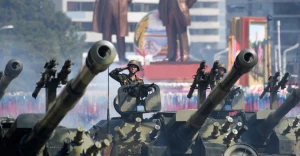
December 13-20 live war map: Second week of Russia’s major offensive, threat to Vuhledar
This December is likely to be the deadliest in the ongoing war, with the Ukrainian Armed Forces reportedly eliminating nearly a thousand Russian soldiers daily. Notably, British intelligence has validated the data on Russian losses since the war start, acknowledging only 17,000 Russian casualties less, compared to the Ukrainian General Staff's count
Weeklong update from the Bakhmut front
In the past week, the occupying Russian forces have amassed 80,000 soldiers towards Bakhmut, surpassing their numbers from last winter's initial attack on the city. The current objective is to seize Ivanivske and Bohdanivka villages and reach the outskirts of Chasiv Yar, where our multi-level defense system is established. Progress has been made along the entire front, with advances ranging from 300-500 meters, including the full occupation of Khromove village. Russians are launching attacks on Ivanivske from both the north and south of the Bakhmut-Chasiv Yar road. Meanwhile, they are attempting to reclaim dominant heights north of Klishchiivka, leading to intense ongoing battles. The enemy is also breaching the forest road from Klishchiivka to Ivanivske, disrupting logistics routes. However, the Armed Forces of Ukraine, equipped with a larger arsenal to repel assaults, are slowing down the Russian forces advance, making a rapid breakthrough of the front unlikely.
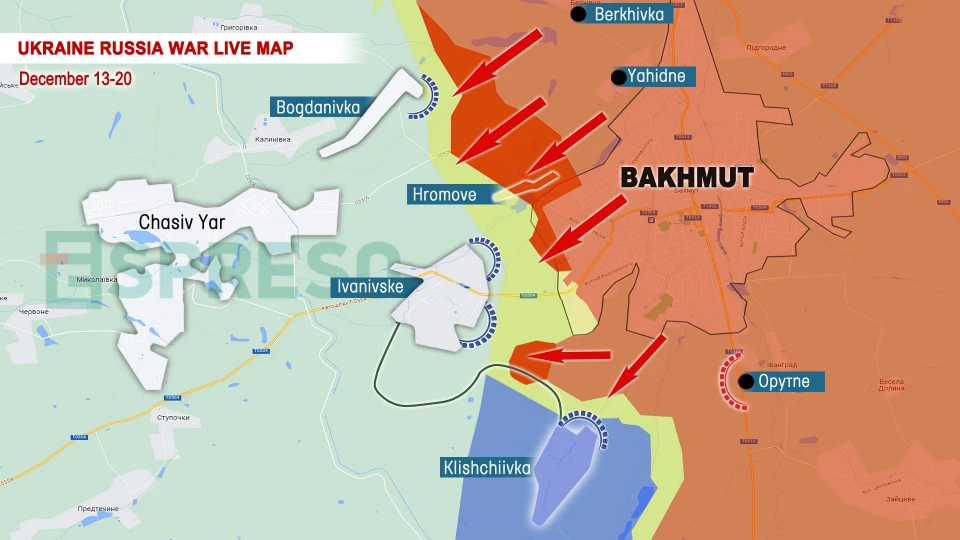
Avdiivka ‘meat grinder’: Russian army suffers losses
The battle for Avdiivka is the bloodiest in this war, with no end in sight. In two months, the Russian army lost 13,000 soldiers and over 210 armored vehicles, not including December data. In contrast, the Armed Forces of Ukraine suffered ten times fewer equipment losses and seven to eight times fewer casualties.
Facing strong resistance, the occupying Russian army focused on two positions west of the "industrial zone." Realizing the difficulty of attacking the fortified Avdiivka Coke Plant area, they now attempt to encircle the city from the north and south to disrupt logistics. In the north, Russian columns daily assault the village of Stepove, advancing 100 meters recently. North of the village, they expanded the zone beyond the railway line. The situation remains stable to the south of the village and near the coke plant.
The most significant Russian advance occurred in the southern direction of the Avdiivka front, with additional reserves deployed. They secured positions north of Opytne, advanced through the forested area to Sievierne, and expanded their influence west and north toward Pervomaisk and Tonenke. The gap through which the Russian troops aim to take Avdiivka has narrowed to 8 km and 700 meters. In response, the Armed Forces are establishing a second and third line of defense. Unless the Russians run out of soldiers, the battle for Avdiivka may persist for several more months.
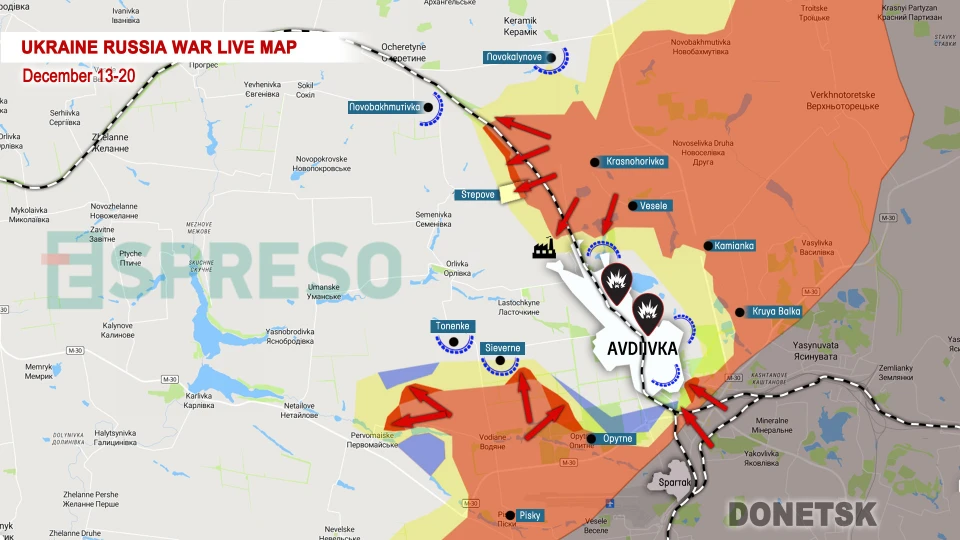
Ukraine war map: loss of Marinka, threat to Vuhledar
Prior to the extensive offensive along the Donetsk front, Ukrainian Armed Forces held about 10% of Marinka. However, after two weeks of intense fighting, the once-vibrant city is now almost entirely under the control of the enemy forces.
This shift in control prompted the enemy to focus their attacks southward, targeting the villages of Pobeda and Novomykhailivka. In the span of a week, occupying Russian troops advanced near the eastern and southern edges of Novomykhailivka, persistently attempting to breach the village from the north. Currently, this front section is highly dynamic and urgently requires stabilization.
Continuing their strategy, the Russians aim to fully eliminate the Armed Forces of Ukraine's presence in Vuhledar. Consequently, we anticipate imminent large-scale assaults on this city, now synonymous with the image of a charred Russian tank.
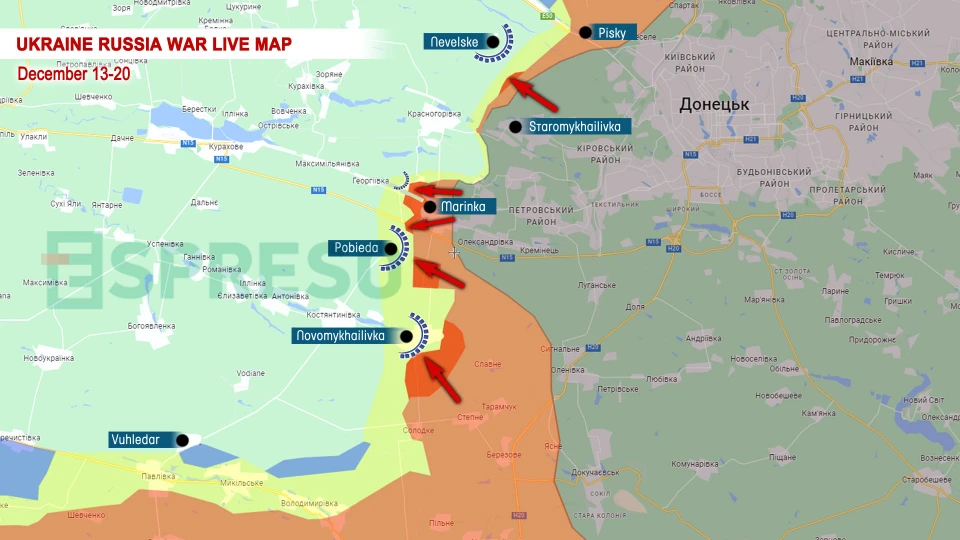
Russian offensive on Kupyansk
Russian forces persist in their attempts to penetrate Kupyansk. Two engineering divisions were relocated to the Lyman Druhyi area, likely intending to cross the Oskil River. Columns are regularly formed near the Lyman Pershyi to assault Synkivka, but Ukrainian drones and artillery frequently eliminate Russian equipment. Despite this, the invading Russian army managed a 300-meter advance through the forest toward the northern outskirts of the village this week. Persistent counterattacks are ongoing near Pervomaiske and Yahidne, although there are no changes in territory.
The front in the Kreminna direction has been stabilized, with no territorial losses to Russian forces in the past week.
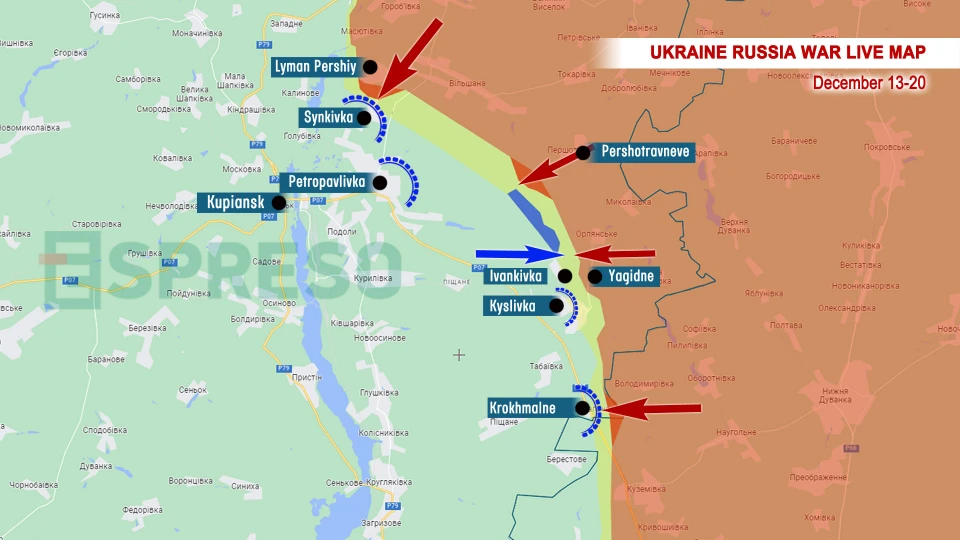
The left bank of the Kherson region remains a source of concern for Putin, as the Armed Forces of Ukraine continue their counteroffensive
The events around the village of Krynky were significant enough for Putin to address them separately during his press conference. A manipulative New York Times article criticized the presence of Ukraine’s Armed Forces on the left bank of the Dnipro River, focusing mainly on Krynky, despite ongoing fights near Oleshky, Poima, and Pidstepne. Russian reports also highlight increased Ukrainian activity on Ostriv Velykyi Potomkin near Hola Prystan.
Currently, the Russian enemy, numbering 65,000, is struggling against around a thousand Ukrainian defenders on the left bank of Kherson region. The Ukrainian forces, well-supported by artillery and drones from the right bank, have gained superiority in these areas. This has resulted in significant losses for the enemy, with drones alone destroying 153 pieces of equipment and targeting another 450 in a few months.
Recently, occupying Russian troops attempted to attack the flanks of the forest near Krynky, where Ukrainian forces are holding their ground. However, Ukrainian drones struck a group of armored vehicles, and subsequently, the military repelled the infantry attempting to break through to Krynky.
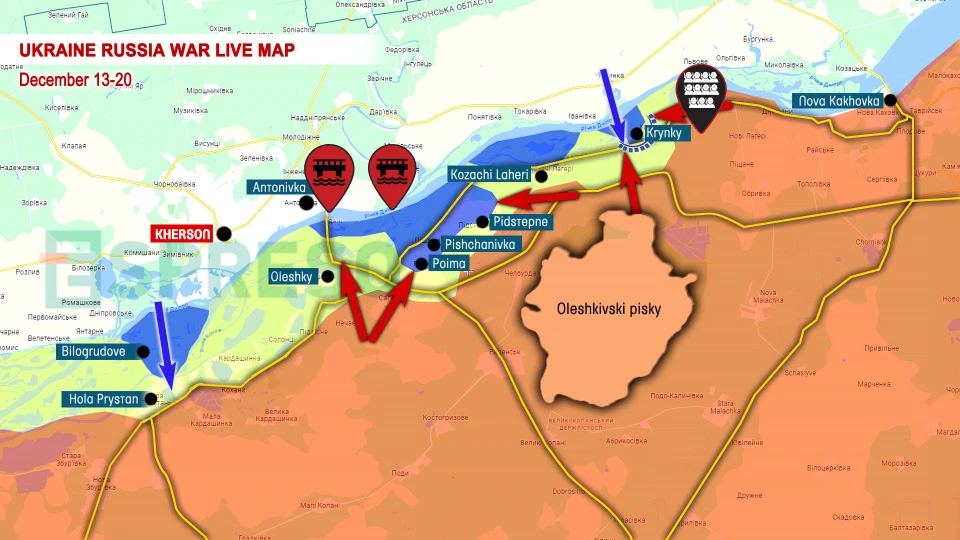
Russian forces launch strikes using Shahed drones and Kinzhal missiles
The "winter attacks season" initiated by the Russians has begun, with air raid alerts sounding almost nightly across the country. Over the past week, Ukraine faced 116 Shahed drones, three Kinzhal hypersonic missiles, and a cruise missile. Ukrainian air defense successfully intercepted approximately 85% of the drones, the cruise missile, and one Kinzhal. Unfortunately, the other two Kinzhals landed near the military base in Starokostyantyniv, a prime target for enemy attacks, with hopes of damaging Ukrainian aircraft.
Kyiv became the second most targeted location, experiencing frequent attacks from Russian forces. Additionally, they directed their attack UAVs towards Odesa, Mykolaiv region, and Dnipro region.
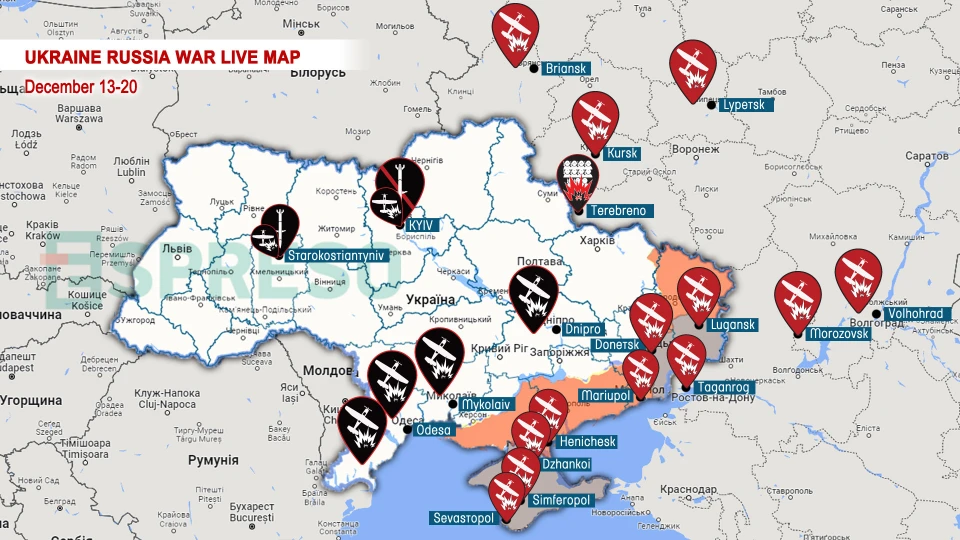
The Armed Forces of Ukraine deploy drones to strike Russia and the occupied territories
An oil depot in Donetsk was hit twice. In Mariupol, rockets targeted an armored vehicle warehouse and an anti-aircraft defense location. Luhansk experienced significant unrest, but details are currently unavailable.
Occupying forces are concealing the aftermath of strikes on Dzhankoy, Simferopol, Sevastopol, and Henichesk, claiming to have downed all drones. However, local reports contradict these assertions.
Ukrainian drones also detonated in the Volgograd, Lipetsk, Bryansk, and Kursk regions, along with Taganrog. The Russian Federation's air defense allegedly shot down 35 drones. A successful Ukrainian security forces operation directed 17 drones to the Morozovsk airfield near Rostov. Consequently, 10 Su-34 aircraft at the 559th Bomber Aviation Regiment base were damaged, and two were destroyed.
A positive development is the Freedom of Russia Legion's resumption of raids in Russia, despite earlier opposition from allies. They engaged in combat near the village of Terebrino in the Belgorod region.
Maps were created based on information from the General Staff of the Armed Forces of Ukraine and other reliable sources. They provide a general overview of trends in the war zone, though their accuracy is limited.
- News












